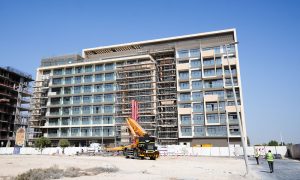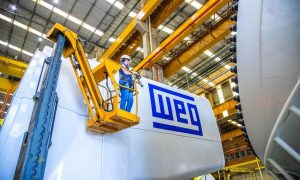Opinion: Mordernise or become obsolete
Neil Shackleton, executive director at ALEC, urges the regional construction industry to take the leap into the future

Steering anything in the construction industry can at times feel like we have our hands on the wheel of a juggernaut. Our industry has been described as thoroughly dormant when it comes to collaboration as well as innovation – lead-footed at best. Yet when we lift our heads up, there are most definitely refreshing pockets of progress being made in construction.
Volumetric modular assembly of a construction product is one of those ‘aha’ moments, and it’s not new. The ability to manufacture a fully fitted-out and complete construction product inside a world-class facility, and to translocate it globally, is thought-provoking, challenging and exciting.
When one analyses what needs to happen in order to fully manufacture a building product in pieces and then assemble it at the point of destination, it seems plausibly easy on the face of it. But the reality is that it is a road fraught with problems, challenges and historic carnage.
To start with, modular assembly turns our industry’s bad habits on its head – get the design right up front and no changes. If you are a client that doesn’t know what you want and changes the design as the building progresses, modular won’t work for you. In a modular assembly approach, all the design thinking is done up front, the materials are chosen, and the BIM model is developed to at least an LOD 400.
More time is focused on the critical thinking and problem-solving before procurement and assembly. The focus is on getting the hard yards done up front, using the skills of experienced, innovative people and then assembling a product in a short time span, in a sequential logical and organised manner. This manufacturing model employs skilled-up resources that work systematically and efficiently.
Modular is about going long. There are many stories of companies and projects that have failed on the road to try and solve the modular Rubik’s cube, but success frequency is starting to level out. It’s no longer about first mover failures; it’s more about getting the system and the product right to achieve a superb level of finish to an incredibly well-designed space.
Design is becoming ever more important as space becomes a luxury on a crowded planet. A carefully selected palette of finishes with space used discerningly well gives the end user a sense of place and desirability with a very practical view of living, especially with a family.
The construction sector has the ability to be agile and is becoming more innovative. It’s not the biggest or strongest that will survive the longest, it’s those with the ability to navigate change and provide efficient and well thought-out solutions in the future. Innovation is the key.
So what are the problems that that modular manufacture addresses?
It’s simple, really:
Speed – a facility can manufacture units much faster than on a construction site.
Efficiency – assembly is organised in a plant, and materials arrive JIT in the sequence required.
Quality – the same teams work on the same activities, ensuring zero rework.
Environment – work is executed indoors rather than on-site, and sustainable reusable materials are planned into the works.
Safety – systematic activities are executed with safety requirements staying the same in a controlled space.
Design – we get it right up front.
Delivery – we can deliver an artisan assembled product into a region that has few skills or resources.
Technology – manufacturing in a factory means we can start to lean on technology throughout the process, using BIM in design, and an ERP system in procurement/accounting/programming and assembly. This means we have an end-to-end integrated IT resource platform, which means transparency and live information. RFID tags can be used as well, exploring the opportunities in automation within the assembly process.
























